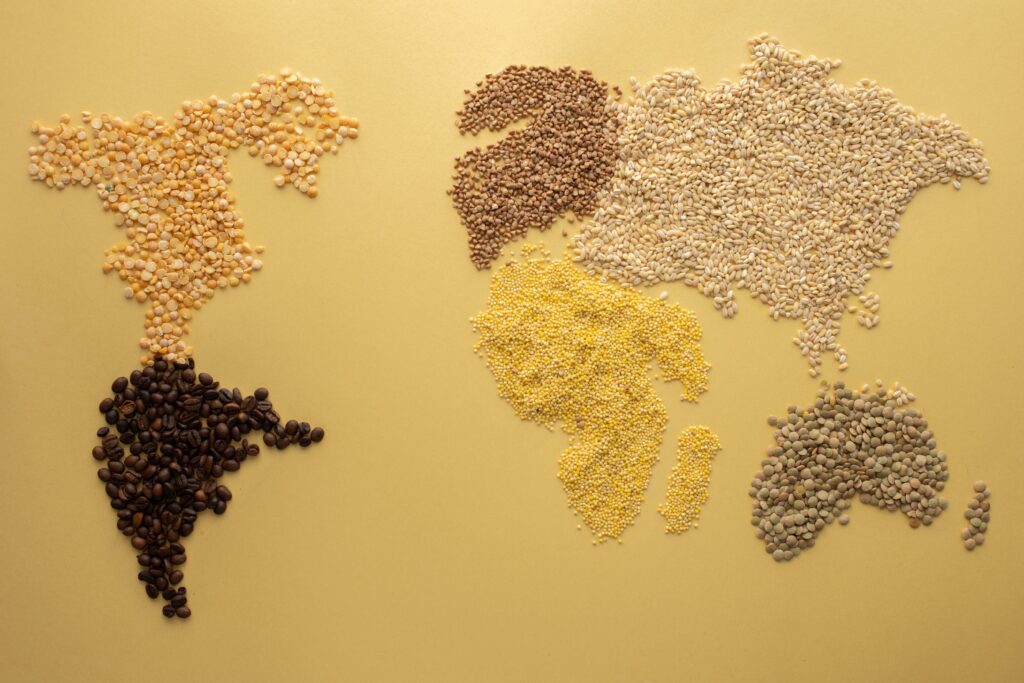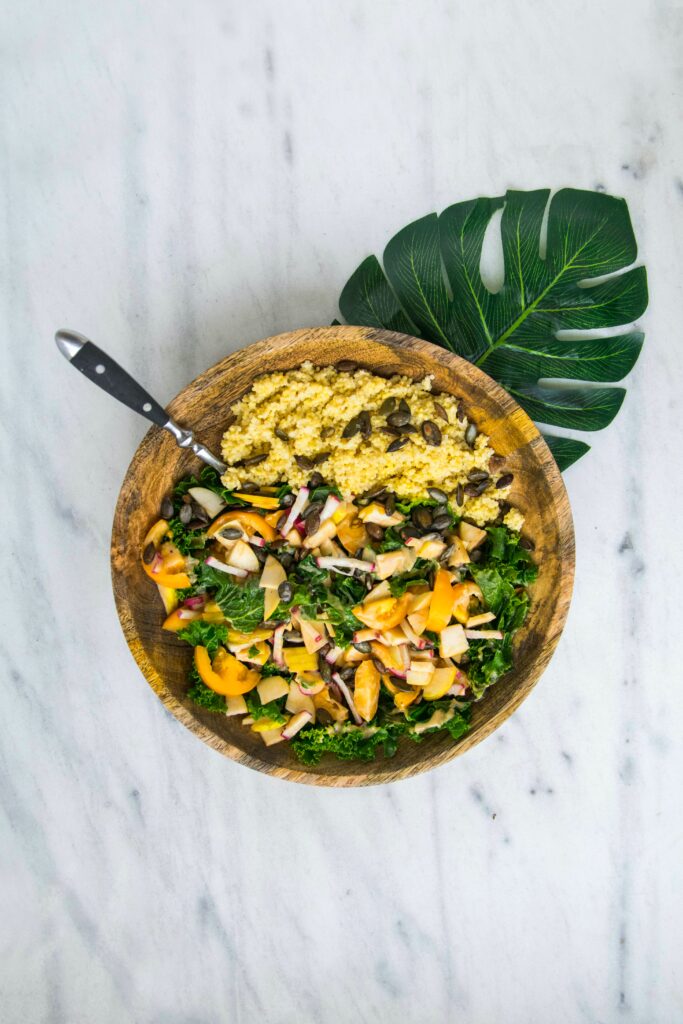Millets are a group of small, gluten-free grains that have been cultivated for thousands of years and have served as a staple food for generations of ancestors in India. Their historical significance can be traced back to ancient Yajurveda texts, which mention foxtail millet (priyangava), barnyard millet (aanava), and black finger millet (shyaamaka), showcasing their long-standing prevalence even before the Indian Bronze Age (4,500 BC).
Despite being a major grain in India until about 50 years ago, millets gradually lost their popularity with the onset of modernization and urbanization. Regrettably, the shift towards a more refined diet has led to the neglect of these grains, which are rich in essential nutrients, crucial for our overall well-being. However, times are changing, and millets are experiencing a well-deserved resurgence due to their health benefits and sustainable characteristics.

India proudly holds the position of the largest millet producer in the world, contributing to over 48% of the global millet production. Other significant producers include Niger, China, Mali, and Burkina Faso. Among the Indian states, Rajasthan, Maharashtra, and Karnataka stand out as the top three millet producers, contributing to more than 60% of the country’s total millet output.
Nutritional Benefits of Millets
Millets boast an impressive nutritional profile that sets them apart as a valuable addition to any diet. Packed with essential nutrients, they offer a host of health benefits that make them an excellent dietary choice for people of all ages.
One of the key reasons millets have gained prominence is their remarkable content of protein, fiber, and minerals. Protein is a crucial component of a balanced diet, playing a vital role in building and repairing tissues, supporting muscle growth, and maintaining overall body function. Millets provide a substantial amount of protein, making them an excellent plant-based protein source for vegetarians and vegans.
The high fiber content of millets also makes them stand out. Fiber is essential for maintaining a healthy digestive system, as it aids in smooth bowel movements, prevents constipation, and promotes overall gut health. Additionally, dietary fiber helps regulate blood sugar levels, which is particularly beneficial for individuals with diabetes or those seeking to control their blood sugar.
Furthermore, millets are a rich source of essential minerals such as iron, magnesium, phosphorus, and calcium. Iron is vital for carrying oxygen in the blood and preventing anemia, while magnesium plays a crucial role in various biochemical reactions in the body, supporting muscle function and bone health. Phosphorus is essential for the formation of healthy bones and teeth, and calcium is renowned for its role in maintaining bone strength.
Another notable aspect of millets is their natural gluten-free nature. This makes them an excellent option for individuals with gluten sensitivities, celiac disease, or those following a gluten-free diet by choice. For these individuals, millets serve as a nourishing and flavorful alternative to grains like wheat and barley.
As a result of their impressive nutritional composition and gluten-free status, millets have been increasingly recognized as a healthy and sustainable alternative to commonly consumed grains like wheat and rice. Health-conscious individuals and those seeking more sustainable food choices are turning to millets as a wholesome and environmentally-friendly option.
Millets on the 5-Star Menu
With a growing focus on providing wholesome and sustainable choices, the culinary world has wholeheartedly embraced millets as a staple superfood on the 5-star menu. The surging awareness of the health benefits associated with millets has driven a wave of culinary revolution, where chefs are dedicatedly exploring new and creative ways to utilize this nutrient-rich grain in their gastronomic offerings.
As the demand for gluten-free foods continues to rise, millets have emerged as a preferred choice due to their natural gluten-free nature, catering to the needs of health-conscious individuals seeking gluten-free dining options.

From top-notch restaurants in bustling metropolises to idyllic retreats nestled in scenic landscapes, millet-based dishes have become an integral part of 5-star hotel menus worldwide. Embracing the mild, nutty flavor of millets, chefs are creating culinary wonders that tantalize the taste buds of health-conscious and eco-conscious customers alike. These innovative dishes not only showcase the gastronomic possibilities of millets but also highlight their potential as a sustainable and nutritious superfood for the future.
Some of the most sought-after millet dishes on 5-star hotel menus include:
- Millet Porridge: A luscious and satiating porridge crafted with millets, water, and an assortment of aromatic spices, making it a wholesome and hearty breakfast option to kickstart the day on a nourishing note.
- Millet Pulao: A tantalizing pilaf infused with the goodness of millets, accompanied by a delightful array of vegetables and aromatic spices, culminating in a flavorful and nutritious choice for a fulfilling lunch or dinner.
- Millet Cakes: Light, fluffy, and brimming with the wholesome goodness of millet flour, these cakes are a guilt-free and delicious snack option, perfect for those seeking a healthier indulgence.
- Millet Burgers: Revolutionizing the concept of burgers, chefs have ingeniously crafted millet buns and patties, accompanied by a medley of fresh toppings and delectable condiments, presenting a mouthwatering and sustainable burger experience.
As millets continue to gain prominence as a superfood that offers exceptional nutritional content and caters to various dietary needs, they are undoubtedly poised to play a vital role in shaping the future of nutritious and sustainable food choices.
With the culinary world embracing their potential and diners seeking delightful and nourishing dining experiences, millets have transcended their traditional image to emerge as a culinary delight cherished by discerning palates worldwide. As awareness continues to grow and the demand for healthier and sustainable options persists, millets are firmly establishing themselves as a culinary force to reckon with, set to leave an indelible mark on the world of gastronomy.
The Government’s Millet Mission – “Shree Anna”
The term “Shree Anna” for millets was officially announced by the Finance Minister, Nirmala Sitharaman, during the presentation of the Union Budget 2023-24 on February 1, 2023. Her budget speech emphasized the importance of millets for sustainable agriculture and the health of Indian citizens.
She also recognized the invaluable role played by India’s small farmers in cultivating these nutritious grains and announced plans to elevate the Indian Institute of Millet Research in Hyderabad to a center of excellence for sharing best practices, research, and technology at the international level.
The Indian government has taken significant steps to promote millets and support small farmers, launching the “Shree Anna” campaign, commonly known as India’s Millet Mission. The campaign aims to uplift the 2.5 crore small farmers engaged in millet cultivation, marking the first time since independence that the government has prioritized their welfare.
The campaign’s focus on processed and packaged food items containing millets has given a significant boost to the Shree Anna market, ultimately increasing the income of small farmers and strengthening the rural economy. A remarkable transformation has occurred in recent years, with more than 500 startups dedicated to Shree Anna and a growing number of Farmer Producer Organizations (FPOs) joining the millet movement.
A comprehensive supply chain has been established, involving women from self-help groups in small villages who contribute to the production of millet-based products now making their way into malls and supermarkets.
Statistics Report on Millets
In a remarkable step towards promoting the significance of millets on a global scale, the United Nations declared 2023 as the International Year of Millets, in response to the Indian Government’s request. This designation is aimed at increasing the visibility of millets and encouraging their production and consumption worldwide, recognizing the immense potential of these nutritious grains in addressing food security and nutritional challenges.
India’s pivotal role in the millet industry is indisputable, with the country standing as a beacon of excellence in millet cultivation and production. As an astonishing testament to its dedication, India proudly contributes to a staggering 80% of Asia’s total millet output and an impressive 20% of the world’s overall millet production. Such substantial contributions underscore India’s leading position in the global millet landscape, reflecting its commitment to sustainable agriculture and its potential to shape the future of nutritious food choices.
The success of India’s millet cultivation can be witnessed in its impressive millet yield of 1239 kg per hectare (ha), surpassing the global average of 1229 kg/ha. This noteworthy achievement is a testament to the expertise of Indian farmers and the country’s commitment to optimizing agricultural practices to ensure a bountiful harvest of these valuable grains. The efficient millet cultivation methods employed in India have not only ensured food security for its citizens but also enabled the country to emerge as a significant exporter of millets.
As the largest producer of millets globally, India has also solidified its position as the second-largest exporter of these grains. This role as a key player in the international millet trade highlights India’s potential to contribute to global food security and nutrition, addressing the ever-growing demand for healthy and sustainable food choices worldwide.
India’s remarkable dedication to millet cultivation and production aligns with the principles of sustainability and environmental consciousness. Millets, being drought-resistant crops that thrive in diverse climatic conditions, offer a promising solution for enhancing food security, particularly in regions facing water scarcity and adverse climate conditions.
By cultivating and promoting these climate-resilient grains, India is not only bolstering its own agricultural sustainability but also making a substantial contribution to global efforts in achieving food security and resilience.
Incorporating Millets into Your Daily Diet
Integrating millets into your daily diet has never been more convenient and enjoyable, thanks to their incredible versatility and adaptability. Here are some delightful and nutritious ideas on how to include millets in your meals:
- Breakfast Bliss: Start your day with a nourishing and satisfying bowl of millet porridge. Boil millets in water or your favorite plant-based milk, and add a touch of sweetness with honey, maple syrup, or fresh fruits. Enhance the flavor further by sprinkling some cinnamon or nutmeg for a comforting morning treat. You can indulge your taste buds with wholesome millet dosa. Prepare a batter with soaked millet and lentils to make dosa, add in your favorite stuffing of veggies and cook them to perfection and for a delightful breakfast experience.
- Lunch/Dinner Delicacies: Infuse your main course with the wholesome goodness of millets. Replace conventional grains like rice or wheat with cooked millets, offering a delightful twist to your meals. Pair them with a variety of colorful vegetables, aromatic spices, and a generous helping of protein-rich lentils for a wholesome and satisfying lunch or dinner. You can also explore the world of millet-based pulao, khichdi, or biryani for a burst of flavors. Enhance the taste with a fusion of spices, nuts, and dried fruits, creating a fragrant and enticing dish that satisfies both your taste buds and nutritional needs.
- Snack Sensations: For guilt-free munching, savor roasted millets as a healthy and crunchy snack. Lightly toast millets in a pan until they turn golden and aromatic. Season them with a pinch of salt, pepper, or your favorite spices for a flavorful and addictive snack that you can enjoy at any time of the day. Take your snacking experience to a whole new level by exploring a variety of millet-based products. Dive into the delicious world of millet cookies, crackers, and chips that offer a guilt-free alternative to traditional processed snacks. Indulge in these wholesome treats knowing that you are making a healthier choice for your body and the environment.
The versatility of millets makes them an ideal addition to your daily diet, transforming mundane meals into flavorful and nutritious culinary delights. Experiment with different recipes and combinations to discover the millet dishes that appeal most to your palate and dietary preferences. By incorporating millets into your meals, you not only elevate your dining experience but also contribute to the larger movement towards healthier, eco-friendly, and more conscious food choices.
Final Thoughts
In conclusion, millets have emerged as a true superfood, captivating the world with their remarkable nutritional profile, adaptability, and sustainability. With their ancient roots dating back thousands of years and their growing popularity in modern times, millets are experiencing a renaissance on 5-star menus and in everyday diets.
The resurgence of millets in the culinary world and the recognition they have received as a healthy and sustainable alternative to traditional grains signal a positive shift in global food choices.
As we move forward, let us embrace millets as more than just grains but as a symbol of culinary innovation, health, and environmental consciousness. By incorporating millets into our diets and supporting initiatives that promote their cultivation, we can collectively make a positive impact on our well-being and the planet.
Together, we can nurture the growth of this ancient and nutritious superfood and pave the way for a healthier, more sustainable, and thriving world. So, let’s celebrate the millet revolution and savor the goodness they bring to our plates and our lives!








